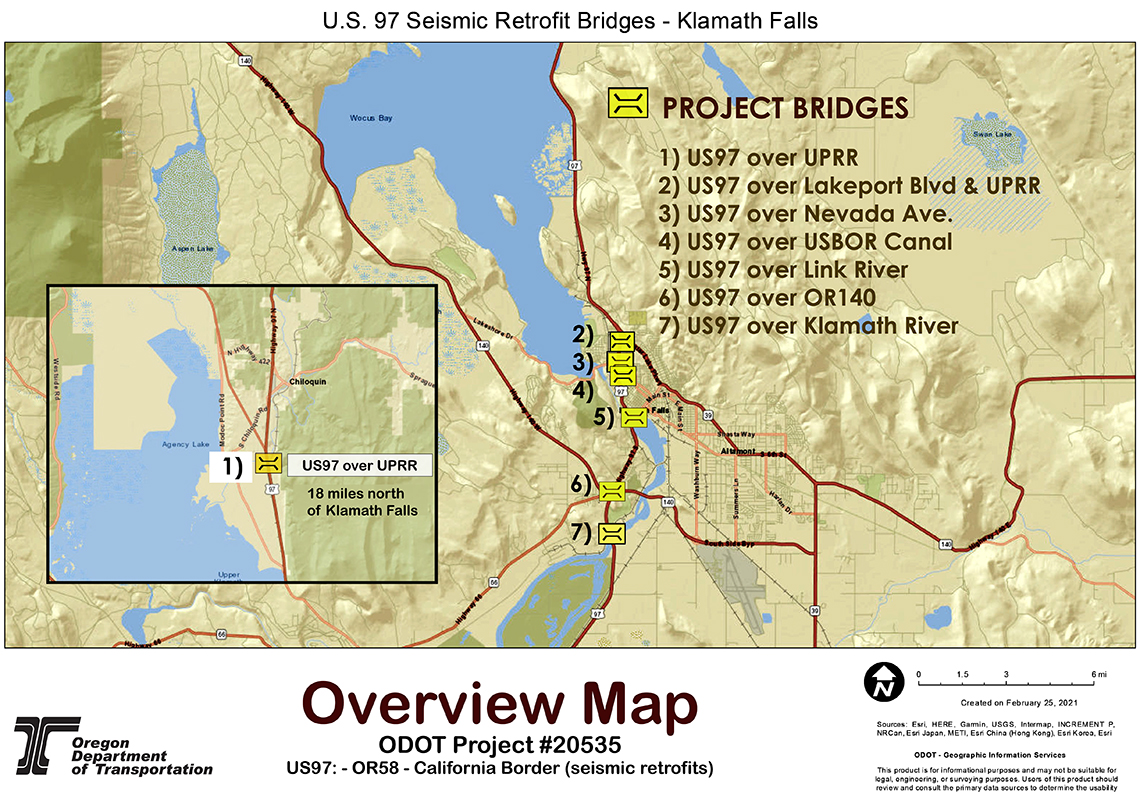About
 Overview Map
Overview Map
This project will improve the seismic resiliency of U.S. 97 so the highway can continue to be a primary north-south lifeline route in the aftermath of a major earthquake. Seven bridges in the Klamath Falls will be replaced or retrofitted:
- U.S. 97 over the Link River and Main Street - This is by far the most complex retrofit in this bridge bundle. We will be strengthening or completely replacing all bridge supports. In addition, connections between the bridge deck and supports will be strengthened. Due to limitations on when work can occur in the Link River, construction is expected to take about four years.
- U.S. 97 over UPRR (Lobert Bridge)- construction complete
- U.S. 97 over Lakeport Blvd. and UPRR (Pelican City Bridge)- construction complete
- U.S. 97 over Nevada Avenue- construction complete
- U.S. 97 over the USBR Canal- construction complete
- U.S. 97 over OR 140 (Green Springs Interchange)- construction complete
- U.S. 97 over the Klamath River and BNSF Railroad- construction complete
Location
U.S. 97
|
Between OR 58 and the California Border
Cost and Funding
$10,162,400.00
What Problem Will This Improve?
The seven structures included in this project were prioritized as seismically vulnerable structures along U.S. 97 and require improvements in order to maintain safety standards.
This project will complete seismic resiliency of bridges along highway U.S. 97. If a major earthquake or other substantial event occurs in Oregon, U.S. 97 will be used as the major north/south lifeline for the state.